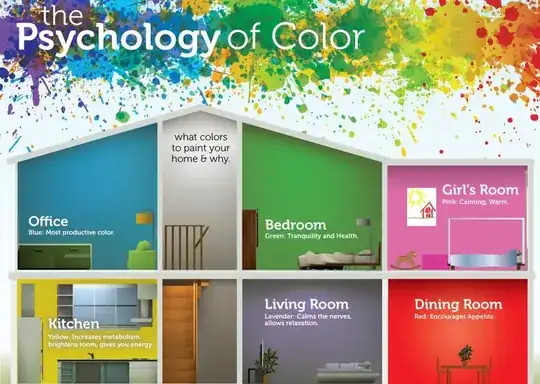Chromotherapy is basically bunk. It's major tenets involve aligning chakras with various wavelengths of electromagnetic radiation (e.g., different colored lights).
Conversely, there is a reasonable amount of evidence indicating that colors do effect mood in various ways and can be used to prime people. There have been a lot of studies regarding consumer behavior in order to try and influence individuals. I don't remember the exact colors off hand, but certain colors have been found to increase appetite while others will tend to make people more complacent. The studies I know of were done in specific contexts, though (e.g., restaurants, waiting rooms, etc.). So, the provided excerpt appears to be reasonably accurate, though assuming a more powerful relationship than what likely exists. This wikipedia explains it pretty well.
As for articles, I recommend starting with the following:
Environmental Color, Consumer Feelings, and Purchase Likelihood. Bellizzi, Joseph A; Hite, Robert E. Psychology & Marketing (1992).
This study tested the effects of red and blue in a shopping-related context. Red and blue were selected because of their opposite color properties. Prior color research has shown that red is perceived as negative and tense as well as physically arousing. Blue, on the other hand, has been identified as calm, cool, and positive. Two laboratory experiments were conducted. In both experiments, retail environments were simulated using predominately red or blue colors. Both experiments corroborate the differential effects of red and blue that prior research suggested. Specifically, more positive retail outcomes occurred in blue rather than red environments. More simulated purchases, fewer purchase postponements, and a stronger inclination to shop and browse were found in blue retail environments. The second experiment helps to identify a plausible explanation to color effects. The results indicate that the affective perception of color rather than the arousal dimension of color may be responsible for the outcome. The positive effects of blue and the negative perception of red may have influenced the results.
Store atmosphere and purchasing behavior. Journal of Retailing Volume 70, Issue 3, Autumn 1994, Pages 283–294
The effects of the emotional factors of pleasure and arousal were shown to be additional to cognitive factors such as variety and quality of merchandise, price specialing and value for money. The practical significance for retailers is that emotional responses induced by the store environment can affect the time and money that consumers spend in the store.
